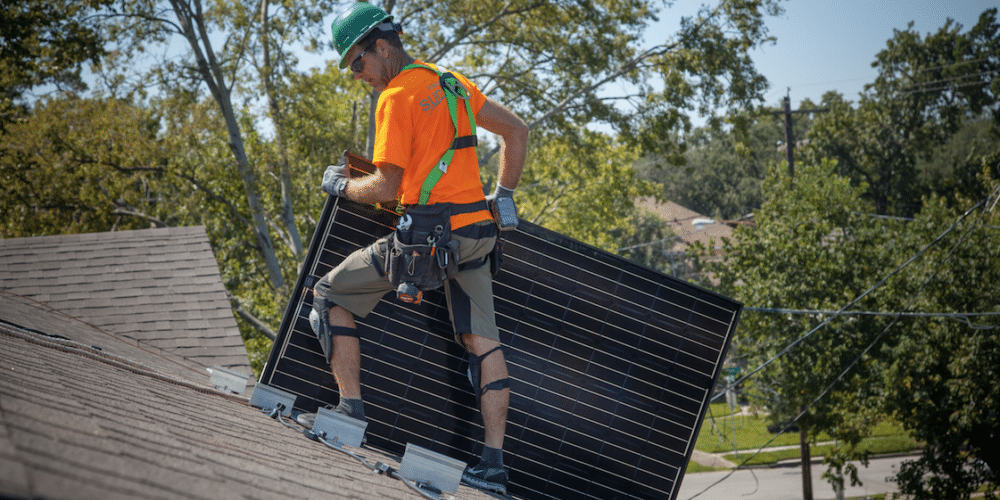The Sunshine State, Florida, has long held that it is illegal for non-utilities to sell electricity. And it still is. However, Sunrun pushed the politicians and was able to get official approval for a fixed rate, 20-year equipment lease. And while it has technically always been legal to lease hardware in Florida, it is now obvious that Sunrun has done the hard work to officially open the market to third-party solar.
And now, we have Sunnova bringing its solar power offerings to the Florida market with a 25-year solar power system finance agreement.
Sunnova CEO John Berger made it clear that Senate Bill 90 and the Public Service Commission ruling has enabled the company’s move:
Recent regulatory decisions over the last year signal that the skies are clearing for solar in Florida and we are thrilled to be expanding our solar service into the state so that consumers have confidence in their ability to generate their own clean energy.
The company put up a new page for Florida residents and have specifically noted the the EZ Own Plan is the specific product directed toward Floridians. The EZ Plan notes the legally required fixed payment plan:

Interestingly – per the plan breakdowns above,”10 In the state of Florida, Sunnova does not offer production guarantee or 24/7 system monitoring. Restrictions apply. Refer to your service agreement for complete terms and limitations.”
The opportunity for solar power in Florida is huge. First, the people from Florida are strong proponents of solar – they know that the sunshine they receive in such prodigious amounts is worth money that could be applied against their also prodigiously-sized July-August air conditioning bills. Second, Florida is the third-largest state in population, with around 20 million residents. Third, the state is physically large, with a lot of open land. Fourth, contracting law allows for relatively well-priced installations.
Of course, with the total amount of solar power being leased trending downward toward a seemingly soft landing around 30-35% of the national market, down from a peak of more than 70%, Sunnova’s lease product will have to compete with direct sales.
Mrs. Boglio is enjoying the benefit of Sunnova SunSafe, our #solar + #batterystorage technology. SunSafe will replace much of the electricity she uses from the grid so if the power goes out, her house will be fully run by SunSafe which includes her solar system & #TeslaPowerwall. pic.twitter.com/1obKJkaxW9
— Sunnova (@SunnovaEnergy) March 22, 2018
One benefit that Sunnova’s solar+storage offering could potentially bring to the Sunshine State is mitigation of one of the world’s busiest hurricane alleyways. And hurricanes have shown a special expertise at knocking out local power lines. Disappointingly, per a note given to us by Sunnova after publishing – there will be no energy storage offering in the state. This are probably a few reasons for this – 1. The price of electricity is cheap, 2. There are no unique rate designs – time of use, demand – to drive the economics of energy storage, and 3. No state level support.
As a direct result of aggressive anti-solar lobbying and public manipulation by the electricity utilities, Florida has a lot of catching up to do to reach a market potential appropriate for its size. The state’s utilities have begun to make some of their own moves around large-scale solar, with NextEra/FPL hosting the largest solar+storage plant in the country, as well as completing 298 MW of beautiful pollinator friendly solar sites. The utility has also announced another 298 MW of solar projects – and NextEra has partnered with a global solar panel manufacturer to open a new facility in the north of the state.
Its clear that the electricity utilities are OK with solar power in the state as they make good money on it. However, their actions show that they don’t want you, me, or Sunnova to own it. The state has already seen well-funded and deceptive campaigns to stop the growth of customer-owned solar, including the attempted “jiu-jitsu” to stop net metering.
Good hunting Sunnova.
This content is protected by copyright and may not be reused. If you want to cooperate with us and would like to reuse some of our content, please contact: editors@pv-magazine.com.








By submitting this form you agree to pv magazine using your data for the purposes of publishing your comment.
Your personal data will only be disclosed or otherwise transmitted to third parties for the purposes of spam filtering or if this is necessary for technical maintenance of the website. Any other transfer to third parties will not take place unless this is justified on the basis of applicable data protection regulations or if pv magazine is legally obliged to do so.
You may revoke this consent at any time with effect for the future, in which case your personal data will be deleted immediately. Otherwise, your data will be deleted if pv magazine has processed your request or the purpose of data storage is fulfilled.
Further information on data privacy can be found in our Data Protection Policy.